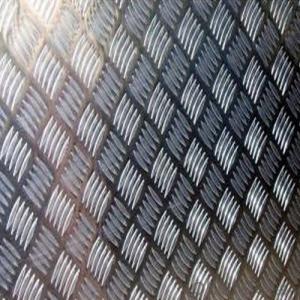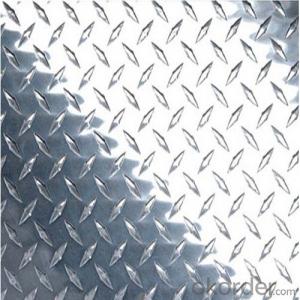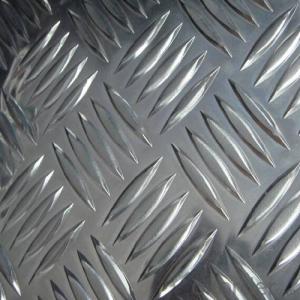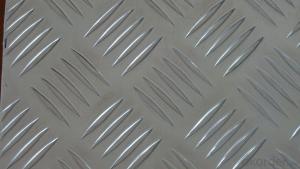1 8 Aluminum Checker Plate
1 8 Aluminum Checker Plate Related Searches
Led Light Bulbs For Ceiling Fixtures Led Lamps For Ceiling 42 In Ceiling Fan With Light Aluminum Coil Stock For Gutters Aluminum Foil For The Grill Hole Saw For Aluminum Plate Aluminum Tread Plate For Trailer Bow Plate For Aluminum Boat Aluminum Foil For Grow Room Aluminum Foil For Joint PainHot Searches
Stock Price For Aluminum Aluminum Coil Stock For Sale Aluminum Gutter Coil For Sale Used Aluminum Scaffolding For Sale 1/4 Aluminum Plate For Sale Aluminum Bar Stock For Sale Aluminum Round Stock For Sale Aluminum Diamond Plate For Sale Aluminum Scaffolding For Sale Craigslist 6061 Aluminum Plate For Sale Aluminum Dock Plate For Sale 7075 Aluminum Plate For Sale Aluminum Tread Plate For Sale Aluminum Checker Plate For Sale Aluminum Plate For Sale Near Me Plate Aluminum For Sale Aluminum Plate For Sale Aluminum Square Stock For Sale Aluminum Flat Stock For Sale Billet Aluminum Stock For Sale1 8 Aluminum Checker Plate Supplier & Manufacturer from China
Okorder.com is a professional 1 8 Aluminum Checker Plate supplier & manufacturer, offers integrated one-stop services including real-time quoting and online cargo tracking. We are funded by CNBM Group, a Fortune 500 enterprise and the largest 1 8 Aluminum Checker Plate firm in China.Hot Products
FAQ
- A solid aluminum sphere has a mass of 83 g.Use the density of aluminum to find the radius of the sphere in inchesExpress your answer using two significant figures.I can't figure this out :(
- Aluminum's density is about 2.7 grams per cubic centimeter. So a sphere with a mass of 84grams has a volume of about 31.111 cubic centimeters. You get this by dividing 84 by 2.7. Now that you know the volume, you can calculate the radius of the sphere. for a sphere, volume = 4/3 pi * radius to the third power. So 31.111 = 4/3 * (3.14...) * r^3. Divide both sides by 4/3 then divide both sides by pi and you get something like r^3 is 7.427. Then find the cube root of this to find your radius. I don't have a calculator, so someone should check the numbers.
- There are several different types of coatings available for aluminum sheets, each offering unique properties and benefits. 1. Anodized Coating: Anodizing is a popular coating method that involves immersing the aluminum sheet in an electrolyte bath and passing an electric current through it. This process creates a durable and corrosion-resistant layer of oxide on the surface of the sheet. Anodized coatings can come in various colors and offer excellent abrasion resistance. 2. Powder Coating: Powder coating involves applying a dry powder to the aluminum sheet and then curing it under heat. This coating method provides a durable, uniform, and attractive finish. Powder coatings are available in a wide range of colors and textures and offer excellent resistance to chipping, scratching, and UV fading. 3. Paint Coating: Aluminum sheets can also be coated with liquid paint. This method provides versatility in terms of color choices and finishes. Paint coatings offer good resistance to weathering, impact, and chemicals, but they may not be as durable as anodized or powder coatings. 4. Cladding: Cladding is a process in which a layer of a different metal, such as stainless steel or copper, is bonded to the aluminum sheet surface. This provides added protection, improved aesthetic appeal, and can enhance the sheet's mechanical properties. 5. Laminating: Laminating involves bonding a protective layer, such as a film or sheet, onto the surface of the aluminum sheet. This coating method offers protection against abrasion, UV rays, and chemicals, and can also provide decorative finishes. 6. Organic Coating: Organic coatings, such as polyurethane or acrylic coatings, are applied to aluminum sheets to provide protection against corrosion, weathering, and chemical exposure. These coatings offer flexibility, good adhesion, and a wide range of color choices. Overall, the choice of coating for aluminum sheets depends on the specific requirements of the application, such as durability, corrosion resistance, aesthetic appeal, and cost-effectiveness.
- Indeed, HVAC ductwork can utilize aluminum sheets. Owing to its lightweight and corrosion-resistant characteristics, aluminum stands as a favored option for ductwork. Moreover, it proves simple to manipulate and can be molded into diverse configurations and dimensions. Furthermore, aluminum ductwork is renowned for its robustness and extended lifespan. It frequently finds application in both commercial and residential HVAC systems, effectively circulating air within a structure.
- Which kind of material does aluminum sheet(aluminum oxide) belong to?
- it's metal and belongs to hardware
- This is kind of odd, but if a volcano erupted and the lava dripped into an aluminum can, would the can melt? Would the lava harden and cool in it?
- Aluminum cans melt at about 1220 F. Lava is about 1300F to 2400F. The can would melt into the lava.
- Yes, aluminum sheets can be easily shaped or bent. Aluminum is known for its excellent malleability and ductility, which allows it to be easily formed into various shapes and bends. It can be manipulated using a variety of techniques such as rolling, pressing, or even using hand tools. The malleability of aluminum makes it a preferred choice in industries such as automotive, aerospace, and construction, where it is commonly used in the production of parts and structures that require complex shapes and bends. Additionally, aluminum's lightweight and corrosion-resistant properties further contribute to its suitability for shaping and bending processes.
- Yes, aluminum sheets are suitable for heat sinks. Aluminum is a lightweight and highly conductive metal, making it an excellent choice for dissipating heat. It has a high thermal conductivity, which means it can efficiently transfer heat away from the source and spread it across a larger surface area. Additionally, aluminum has good corrosion resistance, which is important for heat sinks that may be exposed to moisture or other environmental factors. The malleability and ease of fabrication of aluminum sheets also make them versatile for creating various heat sink designs to meet specific cooling requirements. Overall, aluminum sheets are widely used in heat sink applications due to their excellent thermal conductivity, lightweight nature, corrosion resistance, and ease of manufacturing.
- There are several advantages of using aluminum sheets in automotive applications. Firstly, aluminum is a lightweight material, which means that using aluminum sheets can significantly reduce the overall weight of the vehicle. This leads to improved fuel efficiency and lower emissions, which is crucial in today's environmentally conscious society. Secondly, aluminum sheets offer excellent corrosion resistance. Due to its oxide layer, aluminum is highly resistant to rust and other forms of corrosion, making it a durable choice for automotive applications. This ensures that the vehicle maintains its structural integrity and aesthetic appeal over a longer period. Additionally, aluminum has excellent thermal conductivity. This property allows for efficient heat dissipation, making it suitable for applications such as radiators and heat exchangers. By effectively managing heat, aluminum sheets help prevent overheating and extend the lifespan of various vehicle components. Moreover, aluminum is a highly malleable material, which means that it can be easily formed into complex shapes and designs. This versatility allows for greater design flexibility in automotive manufacturing, enabling the creation of sleek and aerodynamic vehicles. Furthermore, aluminum is a recyclable material. With the increasing focus on sustainability, using aluminum sheets in automotive applications aligns with the industry's goal of reducing waste and minimizing environmental impact. The recyclability of aluminum also contributes to a more circular economy, where materials can be reused and repurposed. Lastly, aluminum sheets have excellent strength-to-weight ratio. Despite being lightweight, aluminum is a robust material that offers high strength and durability. This strength allows for the construction of safe and reliable vehicles that can withstand various road conditions and potential impacts. In conclusion, the advantages of using aluminum sheets in automotive applications include weight reduction, corrosion resistance, thermal conductivity, design flexibility, recyclability, and a high strength-to-weight ratio. These benefits contribute to improved fuel efficiency, durability, safety, and environmental sustainability in the automotive industry.














































